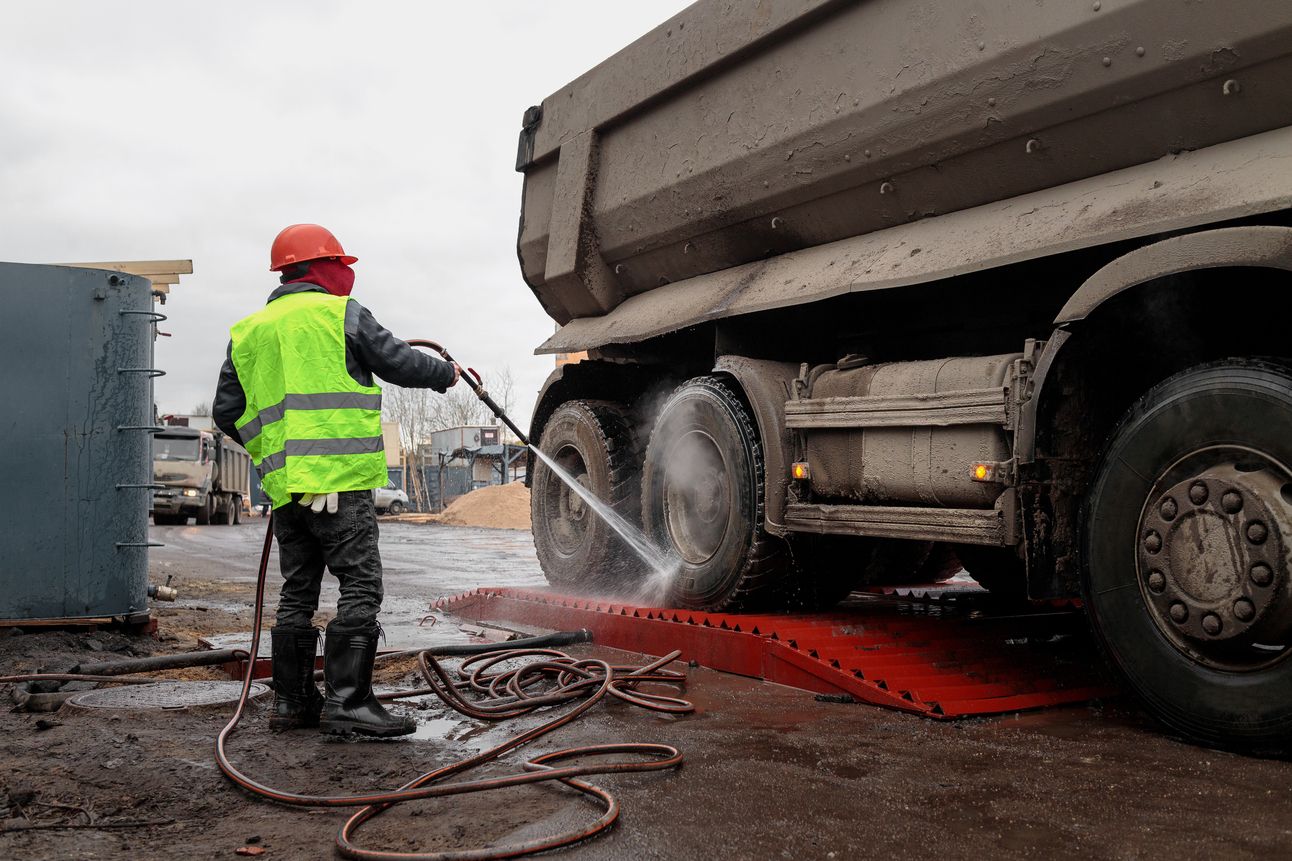Greywater Gains: Is Onsite Water Recycling Ready for UK Construction Sites?
Construction sites are among the most resource-intensive workplaces in the UK, with water use often flying under the radar. From wheel washing to concrete batching, dust suppression to temporary welfare facilities, the water demand is constant. Yet, as regions across the country face increased water stress, the industry must ask a difficult question: Why are we flushing away so much reusable water?

Greywater recycling, the practice of collecting, treating and reusing lightly used water, has long been applied in buildings and agriculture. But its use on construction sites remains limited. That may be about to change. With growing regulatory pressure, rising costs, and public expectations of sustainability, greywater systems could soon become the norm rather than the exception.
What Is Greywater, and Why Does It Matter?
Greywater refers to wastewater that hasn’t been contaminated by sewage. In construction, this might include water used for:
Handwashing and showers in welfare facilities
Wheel washing and tool cleaning
Equipment cooling
Non-potable cleaning tasks
Site accommodation laundries
Unlike blackwater (from toilets), greywater contains relatively low levels of pathogens and can often be reused after basic filtration and treatment.
The environmental and financial argument for reusing this water is strong. Not only can greywater systems cut mains water use by 30–50%, but they also reduce the volume of wastewater discharged to sewers or the environment, a key factor in mitigating pollution risks.
Why Construction Sites Lag Behind
Despite the clear benefits, greywater recycling is still rare on UK construction sites. Several barriers have slowed uptake:
Short project timelines: Many sites operate for months rather than years, making long-term infrastructure seem unjustifiable.
Space constraints: Recycling systems require tanks, filtration equipment, and sometimes treatment units, all of which compete for precious site space.
Perceived complexity: There’s a lingering perception that water treatment is specialist, expensive and difficult to maintain.
Lack of regulation: While building regulations encourage water efficiency in completed structures, there is no legal requirement for greywater use during construction.
However, these obstacles are no longer insurmountable. As technology improves and sustainability expectations grow, the case for greywater systems becomes more compelling.
Innovations Leading the Way
The latest generation of mobile greywater units is compact, modular and easy to install. These containerised systems can be delivered to site, connected within hours, and removed at the end of the project.
Examples include:
Closed-loop wheel wash units, which filter and reuse water for cleaning lorry wheels multiple times before disposal.
Portable greywater treatment plants, capable of handling washroom wastewater for reuse in toilet flushing and cleaning.
Hybrid rainwater/greywater harvesting systems, which maximise on-site reuse by blending captured rain with lightly used water.
Major contractors such as Skanska, Mace and BAM have already trialled such systems on flagship sites, reporting reductions in potable water use of up to 70% in some areas.

A closed-loop greywater recycling system on a construction site: greywater from welfare facilities and equipment washdown is filtered and reused for dust suppression, toilet flushing, and wheel washing — reducing freshwater demand and promoting sustainability.
Cost vs Payback
At first glance, installing a greywater recycling system might appear costly, particularly for short-term projects. Equipment hire, installation and maintenance do incur additional costs. But these need to be weighed against several savings:
Reduced mains water charges
Lower sewer discharge costs (especially in metered environments)
Fewer water deliveries and associated fuel costs
Avoidance of pollution fines or remedial work
On large sites or in water-scarce regions, many firms find the investment pays back within a single project cycle. In multi-phase or longer-term builds, the savings are even more compelling.
A Tool for Water Stewardship
Water neutrality is emerging as a planning requirement in parts of England, notably in the South East, where Natural England has intervened to protect water-stressed habitats. In such areas, developers must demonstrate that their projects won’t increase overall water demand.
Temporary greywater systems can help achieve this. By reducing potable water use during construction, they contribute to the overall water budget, a selling point for both planners and stakeholders.
Greywater recycling also fits squarely within broader environmental management systems, such as ISO 14001, and is increasingly recognised in sustainability assessments like BREEAM and the Considerate Constructors Scheme.
Challenges to Overcome
Despite the positives, the industry must address several remaining issues:
Standardisation: There is currently no common specification for greywater systems on UK construction sites, making procurement and compliance patchy.
Training: Operatives need basic training to ensure systems are correctly used, maintained, and not bypassed in high-pressure situations.
Monitoring and data: Water reuse metrics are often poorly recorded. Better monitoring would help firms quantify benefits and support performance claims.
As interest grows, industry bodies like CIRIA and the Supply Chain Sustainability School have begun developing guidance and case studies to support adoption.
A Culture Shift in the Making?
In the past, construction’s relationship with water has been largely reactive. If dust needed suppressing, the hosepipe came out. If there was a shortage, a tanker was called. But as the climate shifts and resources tighten, this mindset is becoming untenable.
Greywater recycling represents a small but significant step toward a smarter, circular approach to water on-site. Just as waste segregation and low-carbon materials have become mainstream, so too can closed-loop water systems, provided the industry is willing to embrace change.
For contractors looking to stand out in an increasingly sustainability-conscious market, greywater could be the next frontier. In a future where every drop counts, it’s time to stop seeing water as disposable and start treating it as the precious resource it is.




